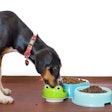
One big news item from the last Association of American Feed Control Officials (AAFCO) meeting was the announcement that its Online Database of Ingredients (ODI) went live on its website (www.aafco.org). To utilize the database, one must purchase the online version of the AAFCO Official Publication or otherwise be granted access to the "FeedBIN" (Feed Basic Information Network). For those pet food companies with access, the ODI has the potential to be a powerful tool in helping ensure label compliance. Some caution as to its current limits is warranted, though.
What does the ODI provide for pet food companies?
The ODI currently supports two major functions. The first is an ingredient term search: Type in a term and a list of all ingredients using that term will pop up, each with links to the pertinent AAFCO definitions (and, where applicable, the Code of Federal Regulations citation). For example, type in the word “meal” and you will be provided with a list of 366 ingredient names. Click on the link next to one of them, such as “poultry by-product meal,” and the page of the Official Publication on which AAFCO Definition #9.10 appears will pop up on your screen.
The results of a search will not appear in any perceptible order unless you further click on a column header (clicking on "Ingredients," for example, will rearrange the list in either alphabetical or reverse alphabetical order). You can also add search terms to shorten the list, and if you put your search terms in quotes it will restrict the results to exact matches only. For example, “meat meal” still has 39 matches but ‘"meat meal"’ has only one.
Of course, many definitions allow for the use of specific rather than generic terms provided the ingredient "corresponds thereto" (e.g., “chicken meal” instead of “poultry meal”) and the ODI attempts to accommodate. However, the results are inconsistent. For example, the search for “meal” includes the results "ovine meat meal" and "lamb meat meal," but the far more common and arguably most appropriate name ("lamb meal") does not appear. On the other hand, both "buffalo meal" and "buffalo meat meal" are included in the results when “buffalo” is searched. Neither "venison meal" nor "venison meat meal" exist on the ODI, but "deer meat meal" does, as do other uses of the term “venison” (e.g., "venison broth").
The other major function of the ODI is the ability for the user to import a complete ingredient list (either as text or a label image), and it will provide an assessment of each ingredient as to whether or not it is compliant with AAFCO terminology. Used with due scrutiny, this has the potential to be a major benefit to pet food companies, speeding up label review times and catching many nuances that may otherwise be overlooked. However, the ODI is far from perfect, and the user requires a healthy familiarity with the AAFCO definitions to properly interpret the results.
Current challenges in ODI functionality
The ODI is very specific but seemingly inconsistent in the way it determines compliance, so it will often raise a lot more flags than warranted. It is pretty good at catching a name that does not wholly abide with its official name (e.g., "dried tomato pomace" is allowed under AAFCO Definition #40.8 but "tomato pomace" alone is insufficient). However, added terms, even when allowed if not actually required by AAFCO or the U.S. Food and Drug Administration (FDA), will tend to throw it off. For example, "turkey" is fine, but "deboned turkey" is reported back by the ODI as "not found." "Titanium dioxide" is okay, but not "titanium dioxide (color)." A list of 16 ingredients from a pet food label were entered into the ODI, two of which were known to be noncompliant (one an incomplete name, one misspelled). The ODI caught both of those errors, but also flagged seven others as not in conformance with the Official Publication.
Fortunately, the ODI allows the user to insert notes or references for unrecognized ingredients, and to create customized lists. In that way, many of the "common or usual" pet food ingredients (e.g., apples, spinach) that are simply not in AAFCO, and other deviations of names as exampled above, can be added so they will not be repeatedly flagged in subsequent reviews.
Unfortunately, what one state feed control official may add to its customized list, another may not. That may not be too different from how ingredient names are evaluated by individual states now, but reliance on the ODI may lead some states to reassess their stands on the acceptability of many ingredient names moving forward. It's also unclear what would happen if a state historically objected to a name that was now deemed acceptable by the ODI. In any event, an increase in state challenges as to pet food label declarations may be anticipated.

















